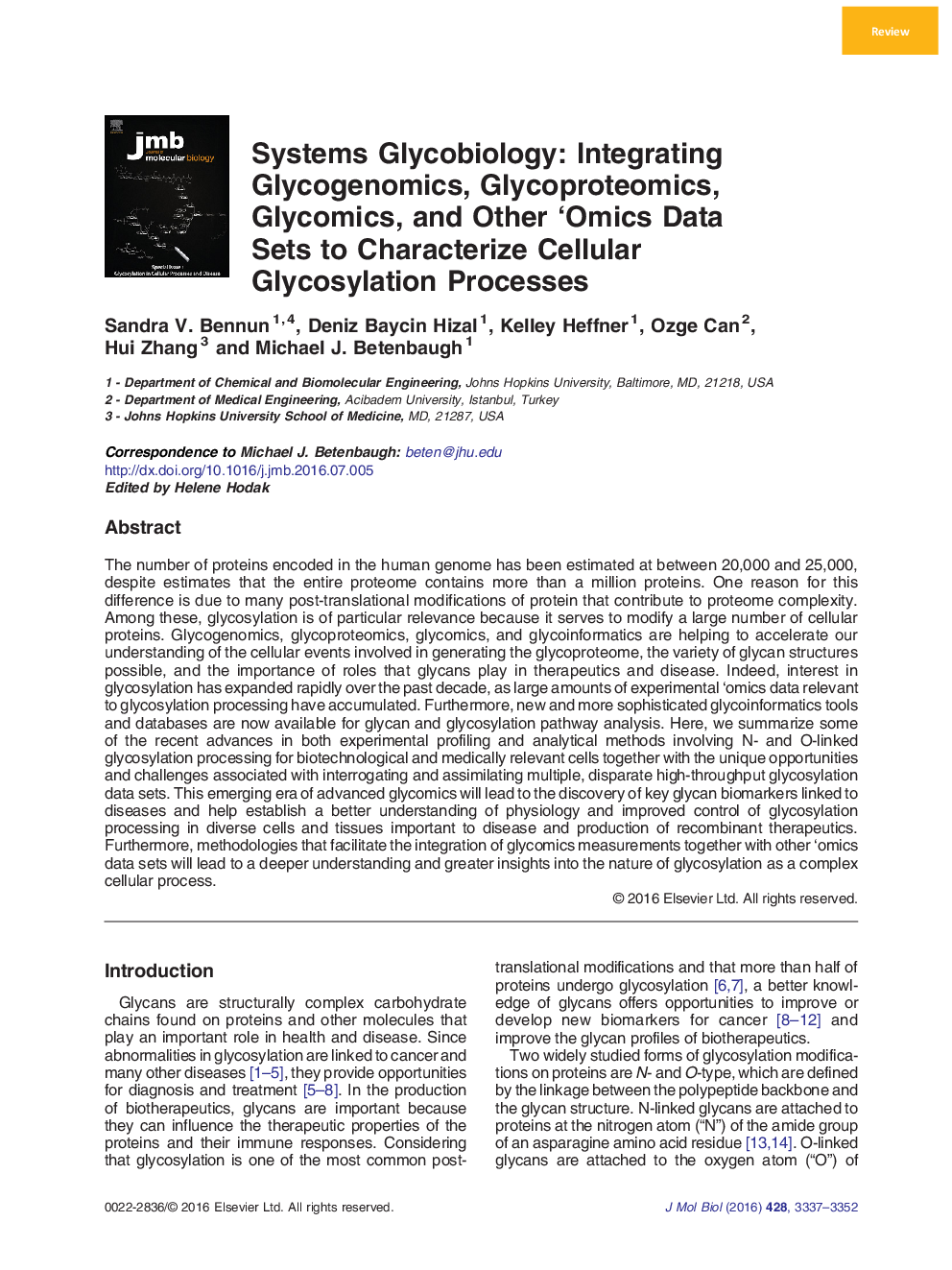| کد مقاله | کد نشریه | سال انتشار | مقاله انگلیسی | نسخه تمام متن |
|---|---|---|---|---|
| 2184257 | 1095815 | 2016 | 16 صفحه PDF | دانلود رایگان |

• Glycogenomics, glycomics, and glycoinformatics will help in accelerating the understanding of the role that glycans play in protein therapeutics and diseases.
• Recent advancements in glycogenomics, glycomics, glycoproteomics, and glycoinformatics tools to support analysis of glycan experimental measurements and the unique challenges due to interrogation and assimilation of disparate high-throughput glycosylation data sets are summarized in this report.
• The era of advanced glycomics can enable discovery of novel glycoproteins and/or glycan biomarkers for diseases and also establish an understanding of the glycosylation behavior of therapeutics based on the glycogenome of the Chinese hamster ovary production host.
• Novel methodologies can facilitate the integration of glycan measurements together with other ‘omics data sets that can lead to a better understanding of glycosylation as a complex cellular process.
The number of proteins encoded in the human genome has been estimated at between 20,000 and 25,000, despite estimates that the entire proteome contains more than a million proteins. One reason for this difference is due to many post-translational modifications of protein that contribute to proteome complexity. Among these, glycosylation is of particular relevance because it serves to modify a large number of cellular proteins. Glycogenomics, glycoproteomics, glycomics, and glycoinformatics are helping to accelerate our understanding of the cellular events involved in generating the glycoproteome, the variety of glycan structures possible, and the importance of roles that glycans play in therapeutics and disease. Indeed, interest in glycosylation has expanded rapidly over the past decade, as large amounts of experimental ‘omics data relevant to glycosylation processing have accumulated. Furthermore, new and more sophisticated glycoinformatics tools and databases are now available for glycan and glycosylation pathway analysis. Here, we summarize some of the recent advances in both experimental profiling and analytical methods involving N- and O-linked glycosylation processing for biotechnological and medically relevant cells together with the unique opportunities and challenges associated with interrogating and assimilating multiple, disparate high-throughput glycosylation data sets. This emerging era of advanced glycomics will lead to the discovery of key glycan biomarkers linked to diseases and help establish a better understanding of physiology and improved control of glycosylation processing in diverse cells and tissues important to disease and production of recombinant therapeutics. Furthermore, methodologies that facilitate the integration of glycomics measurements together with other ‘omics data sets will lead to a deeper understanding and greater insights into the nature of glycosylation as a complex cellular process.
Graphical AbstractFigure optionsDownload high-quality image (89 K)Download as PowerPoint slide
Journal: Journal of Molecular Biology - Volume 428, Issue 16, 14 August 2016, Pages 3337–3352